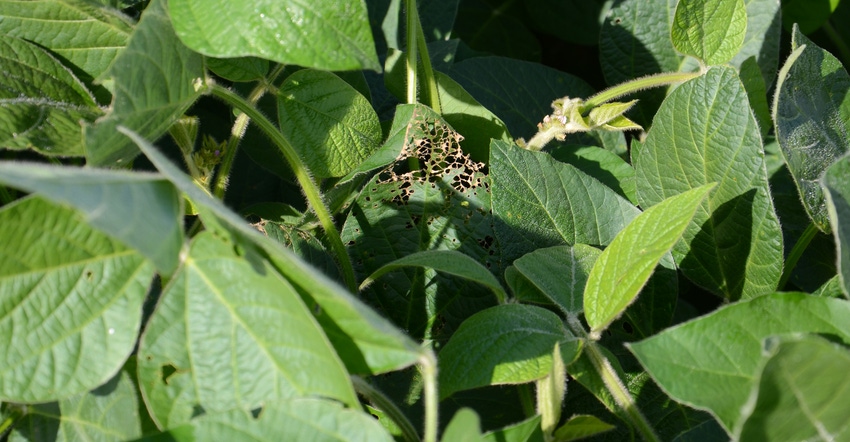
Maybe you’re considering applying fungicides on soybeans this year. Will you see a return on your investment? If you decide to apply a fungicide, when do you apply it? And which products should you use?
The Indiana certified crops advisers panel addresses these questions. The panel includes Traci Bultemeier, accounts manager, DuPont Pioneer, Fort Wayne; Gene Flaningam, Flaningam Ag Consulting LLC, Vincennes; and Bryan Overstreet, Purdue University Extension ag educator, Jasper County.
Bultemeier: First of all, scouting is a must to determine what growth stage the field is at, what disease is out there and at what level of occurrence. According to studies at Iowa State University, fungicide applications made at the R3 growth stage seem to have the best possibility of a breakeven response, even in a low disease pressure year, compared to an R1 application. (R1 is beginning of flowering; R3 is beginning of pod set).
At R3 it’s critical to protect the soybean plant from any effects like disease and insect feeding. Also, according to the ISU study, a fungicide containing strobilurin as one of the active ingredients is more likely to break even compared to a product containing only a triazole ingredient.
Flaningam: Typically, a preventive soybean fungicide application would occur at full flower, or R2, to early pod development, or R3. A preventive fungicide would be a strobilurin-type fungicide such as Headline, Quilt or similar products. Curative-type fungicides that contain a triazole are best for treating plants that are [already] showing symptoms of disease.
Overstreet: First, let’s look at economics. Will the benefits from a $20- to $30-per-acre application outweigh the cost? Do you have enough disease pressure to reach the threshold for treatment?
Second, if you decide to make an application this year, zero in on when you want to apply the fungicide. Actually, when you apply and what product you use depends on what diseases you’re trying to control. Scout your fields and find out if you have enough disease to warrant the use of a fungicide. Also find out what disease you’re trying to control so you know which product to use.
Just spraying a fungicide to be spraying a fungicide is expensive. It can also cause resistance issues in the future, if we’re not careful. Use “A Farmer’s Guide to Soybean Diseases” for a reference to find out what disease you have and what product to use. You can purchase this reference guide at the Purdue Education Store online.
About the Author(s)
You May Also Like




